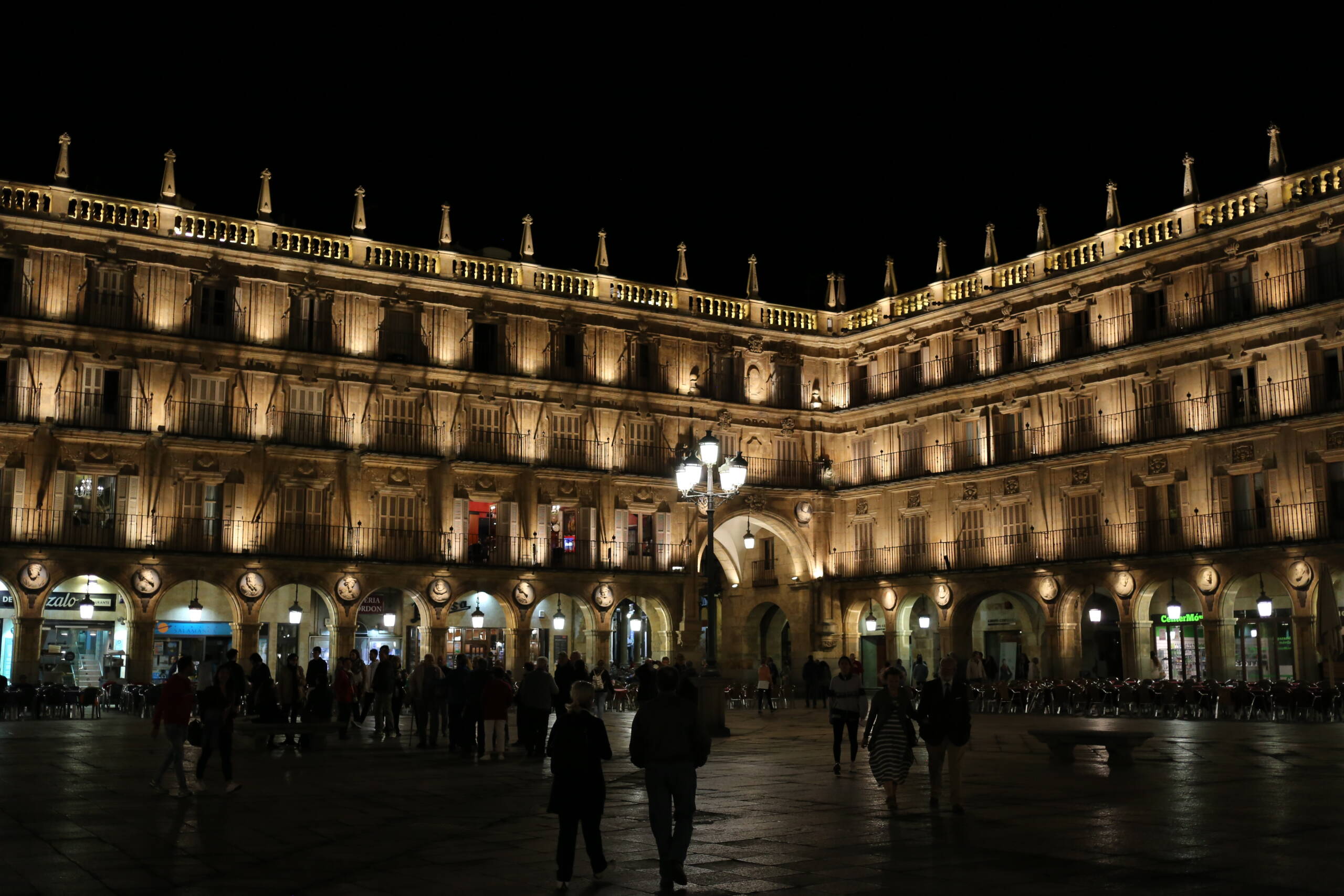There’s something magnetic about Salamanca’s Plaza Mayor when night falls. The golden sandstone, which by day already glows with that honey-like Castilian light, transforms under the floodlights into something theatrical, almost dreamlike. The baroque façade rises in perfect symmetry, lined with balconies and arches that seem to whisper stories of centuries gone by. Each medallion, each carved relief, feels like a silent spectator watching over the crowds below.

Walking into the square at night is like entering a stage. The hum of voices bounces off the stone, footsteps echo across the wide plaza, and the central lampposts spill a soft glow onto couples strolling, families gathering, and groups of students lingering with drinks in hand. Salamanca has always been a city of knowledge—its university is one of the oldest in Europe—and you sense that spirit of youth and curiosity still threading through the night air.
The arcades are alive with cafés and tabernas, their terraces spilling out into the square. Locals sip wine, tourists lean back in their chairs, and musicians drift between the tables with guitars and violins. It’s easy to imagine how this space has been the city’s living room for hundreds of years, where revolutions were debated, festivals celebrated, and everyday life unfolded under these very arches.
What makes it magical isn’t just the architecture—it’s the way the space feels complete. Enclosed yet open, historic yet alive. You stand there, camera in hand, and suddenly you’re not just photographing a monument. You’re capturing a pulse, a rhythm that has been beating here since the 18th century and shows no signs of slowing down. Salamanca at night is not about rushing anywhere; it’s about letting the golden stone wrap around you like a warm cloak and staying just a little longer than you meant to.
Leave a Reply